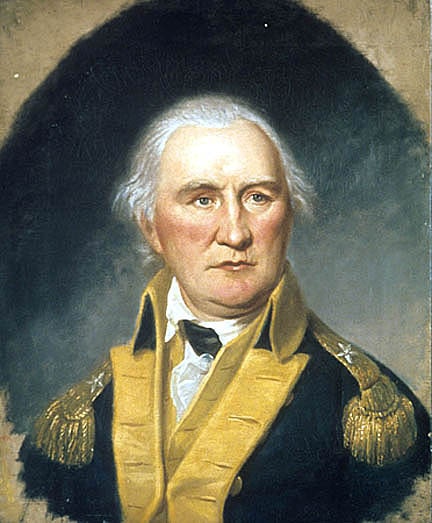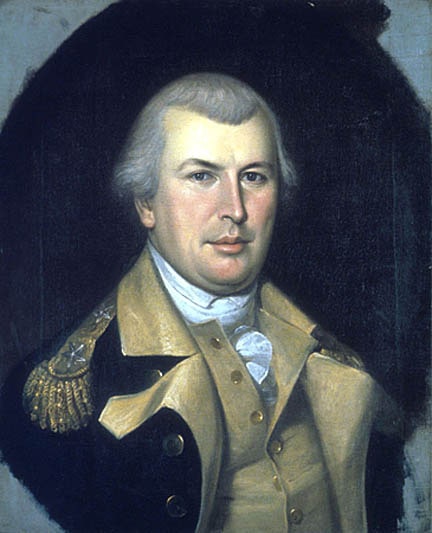Contents
Contents
The Battle of Guilford Courthouse was fought between the British Army and Continental Army near present-day Greensboro, North Carolina, on March 15, 1781.
The British won the battle but suffered significant casualties, eventually forcing them to withdraw to Yorktown, Virginia, and setting the stage for the final battle of the Revolutionary War.
Summary
Leadup
After the French officially joined the Revolutionary War on the side of the Americans in 1778, the British decided to focus their military efforts on the southern colonies, in what became known as the Southern Strategy.
They reasoned that the Patriots had much weaker support in the South, and believed that local populations would rise up against the Continental Army when the British engaged them.
In January 1781, British Lieutenant Colonel Banastre Tarleton aggressively pursued General Daniel Morgan‘s forces through South Carolina.

Morgan halted his march, arranged his men, and defeated the British through smart military strategy at the Battle of Cowpens on January 17.
However, a larger British force under the command of General Charles Cornwallis was in the area, so Morgan decided to immediately retreat into North Carolina.
Morgan’s men met up with the Continental Army’s main southern force, under the command of General Nathanael Greene, in North Carolina in early February.

Once again, the British pursued the Americans aggressively, to the point that most of Cornwallis’s men were exhausted, having marched hundreds of miles with little food and no rest.
British supply lines were stretched due to the distance they were travelling, and they were under constant threat from Patriot guerrilla attacks.
Eventually, the British caught up to the Americans at Guilford Courthouse, in Greensboro, North Carolina.
By this point, the British numbered just 2,100 men, compared to the Americans’ 4,500 troops.
Battle
Greene organized his men into three rows, using a similar tactic to the one deployed by Morgan at the Battle of Cowpens.
He placed his least-trained North Carolinian troops at the front, who were ordered to fire a short volley before retreating. Cavalry units were also placed in strategic locations to protect the flanks and exploit any British openings.
The second line was composed of better-trained Virginia militiamen, followed by a core group of Continental Army regulars, predominantly from Virginia, Maryland, and Delaware.
However, in the Southern Theatre of the Revolutionary War, Greene also frequently performed strategic retreats to wear down the British Army – and he used this tactic again at the Battle of Guilford Courthouse.
Fighting began at about 1:00pm on March 15th, with artillery fire exchanged between the two sides for about 30 minutes, to little effect.
The British then advanced at the first line of Continental troops. Greene’s men opened fire, inflicting a significant number of casualties, but quickly panicked, and fled behind the second line.
The Virginians in the second line put up a stronger fight, but the British were eventually able to push through, reaching Greene’s best troops.
This began a period of intense, chaotic fighting, as the British 33rd Regiment reached the Continental Regulars.
The Americans broke line, but their cavalry mounted a counterattack, resulting in a melee in the middle of the battlefield.
Cornwallis ordered his artillery to fire grapeshot into the scrum, killing many of his own men, but allowing what remained of his army to advance.
At this point, Greene opted to retreat to avoid further losses, resulting in British victory at the Battle of Guilford Courthouse.
The fighting was intense, with significant casualties on both sides, though the British were worst-affected.
Casualties:
- British: 93 killed and 413 wounded, including a significant number of officers
- American: 79 killed and 185 wounded
Significance
With his men exhausted, and having lost about a quarter of his army, Cornwallis was forced to abandon the American south after the Battle of Guilford Courthouse.
He soon withdrew to Wilmington, North Carolina, before marching into Virginia, where he established a base in the city of Yorktown.
Greene promptly retook control of large parts of the South, cutting off the British forces from their supply lines and Loyalist militias.
Meanwhile, George Washington decided to march south from New York, allowing him to trap the British at Yorktown in the fall of 1781.
With the help of French forces, Washington captured Yorktown from Cornwallis, leading to American victory in the Revolutionary War.
To sum up, though the Americans lost the Battle of Guilford Courthouse, the extent to which it depleted the British Army set in motion the final actions of the American Revolution, eventually allowing the Patriots to claim victory over the British Empire.
Facts
- The Battle of Guilford Courthouse lasted for around two hours in total.
- American dragoons (cavalry) at the battle were under the command of William Washington in the field, second cousin of George Washington.
- British Lieutenant Colonel Banastre Tarleton, who just two months earlier led the British to defeat at the Battle of Cowpens, lost two fingers at Guilford Courthouse after being shot by a marksman. Just like at Cowpens, he was once again nearly killed in a cavalry charge during the second of the two battles.
- Despite the low casualty numbers, around 1,000 American soldiers were recorded as missing after the battle. Some were captured, but most were militiamen who melted away during the retreat, leaving the field and heading home once their enlistments were up.


